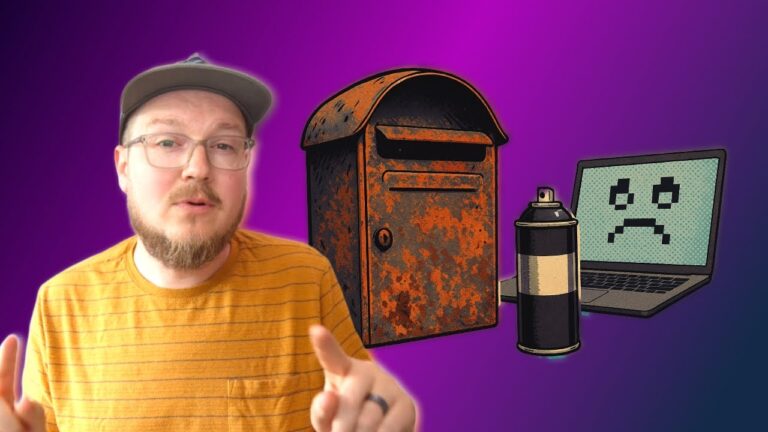Today we’re going to talk about transparency and why you should offer it to your clients.
Now, for the sake of transparency: I confess, this is a little bit of a rant. But I’m going to do my best to make it a controlled rant and wrap it up in some good business advice, and leave you with some tactics to help make sure your customers don’t get ticked off and run in the other direction.
In the course of running a business and attracting new clients to your business, you’re probably going to get some questions about what it is you offer:
How does your product work?
What sets your services apart from your competitors?
Who is your Daddy and what does he do?
Sometimes people will jump on your website, get all the information they need, and click “Buy.” But more often than not — especially for us self-employed folks who are operating on a smaller level and have a lot less brand recognition — people are going to ask a few questions before they’re ready to take the plunge.
For a lot of freelancers and small businesses there’s a weird and uncomfortable place on your growth curve where, after you’ve run out of people you know directly and who can vouch for you and who have given their word of mouth referrals, you start getting into territory where you need to acquire new customers who don’t know who you are. They don’t care that you’re Nancy’s nephew who knows a little bit of web design, or that your Doug’s kid who struck out on his own to start his own plumbing practice.
You’re on your own and you have to vouch for yourself. So while you’re finding yourself and developing your brand, it’s really important to be true to you, because if you’re just going to copy what everybody else is doing, you’re going to look like everybody else and you’re going to get lost in the crowd.
Being transparent means being a little vulnerable, which can be scary because, well, it puts you in a vulnerable position. You might be showing a side of you that you might be a little self conscious about. It might be tempting to pretend that everything is super polished and buttoned up, and you’re just like people who have been established for years and years. But that’s not who you are, at least not yet. Chances are, people are wanting to do business with you for that very reason.
If they’re knocking on your door instead of driving to Walmart or calling up an established franchise for their services, your customers are probably looking for a smaller, more personal. Is this an actual human being who’s going to take care of me who’s an actual human being sort of experience. So that’s one aspect of transparency. Maybe we should actually call that authenticity. I don’t usually like using that word because it’s pretty buzzy, but there it is.
Another important aspect of transparency is honesty, honesty and setting expectations for your customers, knowing your own limitations and not saying you can do something that you can’t do that’s going to get you in trouble really fast and helping everybody understand exactly what they’re going to be getting for their money and what they’re not. It’s really hard when you’re getting established and you’re trying to grow to tell somebody I’m sorry, I can’t do that. I’m going to need to turn away your business. But if you actually can’t serve your client that well or you can’t clearly communicate the process for your customers and assure them that they’re going to get X-Y-Z in so many days for their money.
That’s a recipe for a big mess down the road, some unhappy customers.
And you know, those referrals you were getting early on from your friends and family. You’re not going to get those anymore. This is a little bit of a rabbit trail. We’re kind of talking about being transparent with yourself now and not trying to pretend to do or offer something that you just really aren’t well situated to do. That’s a whole other conversation, finding your niche, your area of expertise and really honing in on the specific value proposition you have to offer customers.
That’s some really important stuff you need to establish if you want to be successful and not trip and fall into a big pile of Doo Doo. The last aspect of transparency that I want to talk about right now is the thing that kind of kicked up all this dust in the first place. I was having some pre-sales conversation with a vendor. I’m evaluating SEO agencies for a client of mine. I’m not going to name names, but one in particular had a very intriguing offer, the kind of offer that seems like it’s too good to be true.
And I’m beginning to believe that that’s the case, because as I’m talking with one of the sales reps and asking some questions about SEO, which is a complicated thing. There’s a lot involved that goes on behind the curtain, and there are ways to mess it up. So I’m asking questions, just trying to understand their methodology, their approach to SEO, exactly what my clients are going to get for their money. The answers I’m getting are very vague. What will you get?
You’ll get ranked more highly on Google? Oh, okay, but how what do you guys actually do to get us to rank higher on Google? And I kid you not. They said, buy the program and you’ll find out that’s like if I went to a restaurant and I saw really good soup on the menu and I pulled the chef aside and I said this soup sounds really good, but what’s in it? And the chef says, really good stuff.
You’re going to like it. And I say I’m allergic to garlic. Is there garlic in here? And he says, Why don’t you eat it and find out I’m unimpressed unnamed SEO agency and my trust is severely crippled. Maybe I’m not asking the right questions, or maybe I’m not looking close enough at the literature that they sent me, but I shouldn’t be left feeling like I’m in the dark and that they’re trying to keep me out from understanding what their process is now.
Maybe they’re concerned about not wanting to tip their hand and share any trade secrets and lose their competitive edge. But they’re coming across more as scared of not wanting me to see just how low quality of product it is or something else. I don’t know. You’re not being transparent and forthright with information as much as possible. That puts it on the other person to use their imagination and interpret it as they see fit.
So I have every right to assume that they’re super sketchy because they’re not telling me otherwise, except for the fact that we’re not super sketchy prove it. Now I understand the hesitancy of not wanting to give away too much for too little, but there’s real power and offering value in advance. That’s what I’m doing right now. I genuinely want to be helpful in adding value and see as many small businesses succeed as possible. So that’s why you should subscribe and hit the like button.
So the YouTube algorithm knows to show this video to more business heroes like yourself. But this YouTube channel and free pre-sales conversations over the phone or Zoom with clients where I can give them a taste of the value that I have to offer. It’s all about being transparent and building trust and letting them get a picture of what it would be like to work with me. If you’re not going to let customers see inside, then they’re not going to be comfortable. They’re not going to feel like they know what they’re buying, so they’re going to shop around and take their money elsewhere.
It’s not just information services either. This is why Costco turns into a free micro food court around lunchtime every day, letting customers smell and taste something is a lot more effective at moving product than just showing a pretty picture on a cold cardboard box. So let’s go back to the beginning. You’re trying to get established and increase your awareness. Don’t pretend that you have it all together and you’re bigger than you are by being open and vulnerable and freely giving value and information to your prospective customers.
That’s what’s going to set you apart from the crowd. You’re going to get lost if you’re just wearing a mask. This is much more interesting. Don’t do that too long because you’ll die, which is actually a pretty clever segue into my final point. You do need to know when to draw the line.
Costco isn’t handing out full lasagnas. They’re giving you a little Dixie Cup. You usually don’t get to test drive a new car for a full month before you decide whether or not you want to buy it. Likewise, you can’t be spending hours and hours answering emails and phone calls from potential clients who you’re starting to think might not actually bite. I don’t think I can give you any more.
I want one. You want to develop systems to help you quickly qualify leads. So you know you’re spending time with actual prospective clients who are going to actually possibly give you money, not just people who are sniffing around and they have you somewhere in their top 15 options. Or maybe they’re just lonely and they want a penpal. You need to make sure that you’re advancing the sales process and not just getting stuck answering questions for months on end for somebody who might not have any intention of actually pulling the trigger.
Obviously, all of this depends on the potential return on investment. If there is a huge client and they’re being a little bit picky because they’re deciding whether or not to handle $100,000, be patient with them. You want that sale. I mean, if it’s a good fit and you’ll be able to serve them well, but if it’s a potentially low value transaction that’s being discussed, you could potentially be losing money after the first few email back and forth. So do your cost benefit analysis on all of these things.
Don’t be stingy with your time and information, but at the same time, know when to cut them off and call a taxi and rant. It’s pretty controlled, right?
Be transparent to yourself. Be authentic and don’t be stingy with information. Let people take a look behind the curtain. Unless there’s something really weird going on behind there. If you’re doing anything that’s blocking people out from being able to understand you and your business a little bit more, you’re also blocking them from being able to give you money, build trust, build relationships.
This is the way for small businesses, especially. Thanks so much for watching again. Please subscribe and hit the like button so I can be transparent with even more people. And if you have any ideas, disagreements, or comments, you’d like to leave. There’s a whole section below.
Just for that, I want to be genuinely helpful with the content that I’m developing and sharing and your feedback can help me do that.
Originally published at https://selfemploymentsidekick.com.


